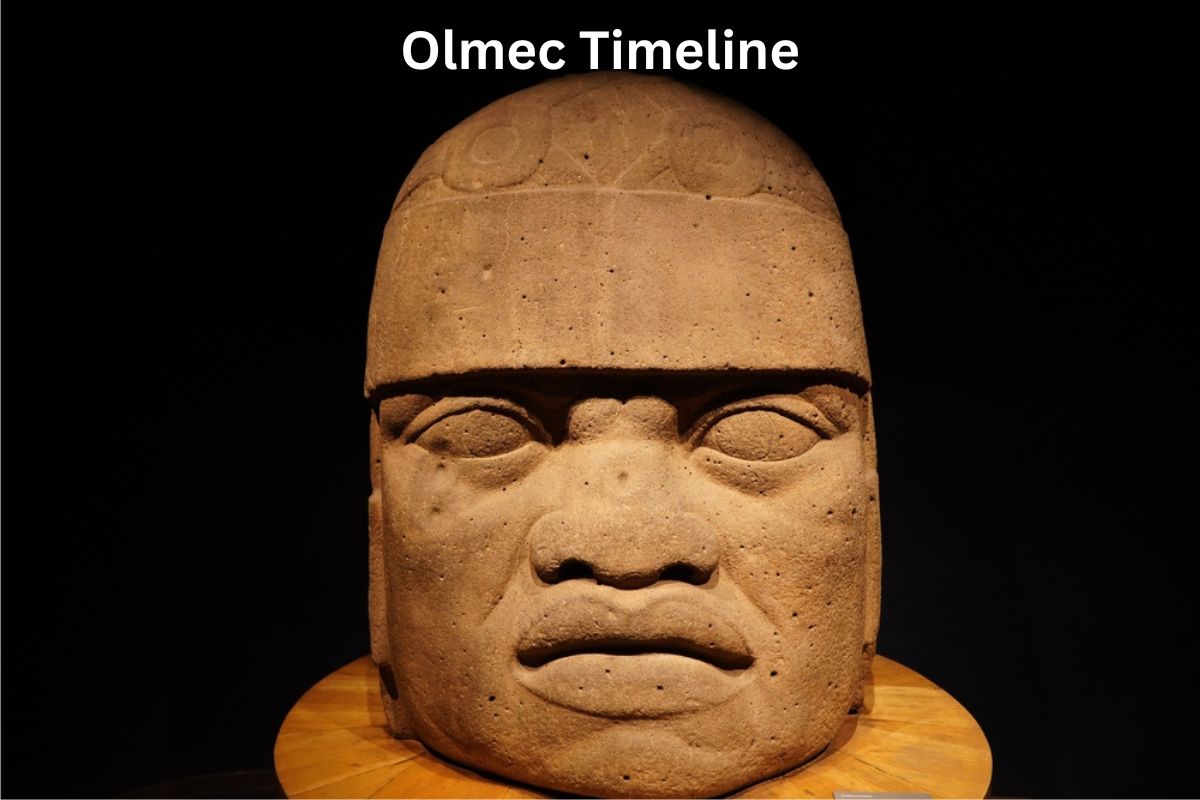The Olmec civilization is widely recognized as the first major civilization in Mesoamerica, a region that includes present-day Mexico and Central America.
Emerging around 1500 BC, the Olmecs are notable for their monumental architecture, intricate jade carvings, and colossal stone heads believed to represent their rulers.
Their cultural, religious, and artistic influences significantly shaped the subsequent civilizations in the region, including the Maya and Aztec.
The rise and fall of the Olmec civilization, spanning over a millennium, is marked by the establishment of grand city-centers, the flourishing of their distinctive art and culture during the ‘Golden Age’, and a decline leading to the eventual abandonment of their cities.
| Time Period | Events |
|---|---|
| 1500 BC | Initial settlements of Olmec civilization begin. |
| 1200-900 BC | Rise of the first major Olmec center, San Lorenzo. |
| 900-400 BC | “Golden Age” of Olmec civilization with the move to La Venta; development of arts, religious practices, and hieroglyphic writing. |
| 400-300 BC | Decline and abandonment of major Olmec centers such as San Lorenzo and La Venta. |
| 300 BC-AD 100 | End of the Olmec civilization, influence persists in later Mesoamerican civilizations. |
Timeline of the Olmec Civilization
1500 BC – Initial settlements of Olmec civilization begin
Around 1500 BC, people in the region that is now the Mexican states of Veracruz and Tabasco began to settle in larger communities, marking the early stages of what would become the Olmec civilization.
Also Read: Facts About the Olmec
Agriculture, particularly the cultivation of maize (corn), became more prominent during this time, allowing for population growth and the establishment of permanent settlements. The exact origins of the Olmecs remain a subject of debate among scholars.
1200-900 BC – Rise of the first major Olmec center, San Lorenzo
This period saw the rise of San Lorenzo, the first major center of Olmec civilization. San Lorenzo was likely both a political and a religious center, as well as a hub for trade.
During this time, the Olmec civilization began to produce notable works of art, including the first colossal stone heads for which they would become famous.
Also Read: Accomplishments of the Olmec Civilization
These enormous sculptures, some up to 9 feet tall and weighing 20 tons or more, are believed to represent powerful Olmec rulers. San Lorenzo was also known for its complex system of hydraulic works, including drainage systems and channels for managing water.
900-400 BC – “Golden Age” of Olmec civilization
The middle Olmec period is sometimes referred to as the “golden age” of Olmec civilization. The center of activity moved to La Venta during this time. La Venta was a carefully planned city, with complex architecture and monuments, including a large pyramid.
This period saw further development of Olmec art and religion, as well as the possible development of a hieroglyphic writing system.
Some of the most famous Olmec artworks, such as the elaborately decorated “altars” (more likely thrones or stages for rituals), and small jade figurines, come from this period.
The religious practices of the Olmecs also became more complex, with evidence of elaborate rituals and possibly human sacrifice. Their religious iconography, featuring figures such as the Feathered Serpent and the Rain Spirit, would greatly influence later Mesoamerican cultures.
400-300 BC – Decline and abandonment of major Olmec centers such as San Lorenzo and La Venta
The reasons for the decline of the Olmec civilization around this period are not entirely clear. Some theories suggest environmental changes, such as rising sea levels or volcanic activity, could have led to this decline.
Others propose social unrest, overpopulation, or resource depletion as possible causes. What is clear is that during this period, the major Olmec centers of San Lorenzo and La Venta were largely abandoned.
This abandonment was often marked by the deliberate defacement and destruction of the grand monuments and statues that these cities were known for.
The end of the Olmec civilization does not appear to have been abrupt, and many elements of Olmec culture likely persisted in the region’s smaller communities.
300 BC-AD 100 – End of the Olmec civilization, influence persists in later Mesoamerican civilizations
By around 300 BC, the Olmec civilization had essentially ended. However, their cultural, artistic, and religious practices did not disappear completely. Instead, they influenced the many subsequent civilizations that arose in Mesoamerica, including the Maya and Aztec.
Aspects of Olmec culture, such as the use of a calendar and writing system, religious iconography, and the tradition of building large-scale ceremonial centers, can be seen in these later civilizations.
The Olmec civilization is often referred to as the “mother culture” of Mesoamerica because of this enduring influence. Even after the fall of the Olmec civilization, the region remained a significant cultural and trade hub.
